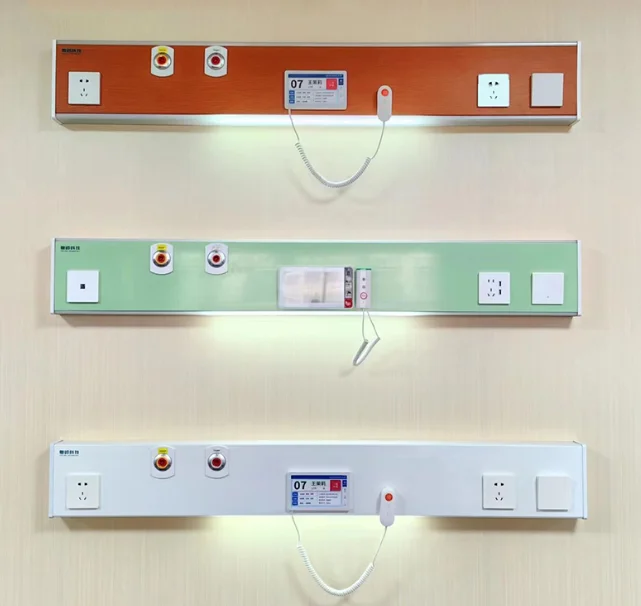A bed head unit is an essential piece of hospital infrastructure, designed to deliver critical services and utilities to patients at their bedside. These units, often seen as bed head panels, provide access to medical gases, electrical outlets, nurse call systems, and lighting. In modern healthcare settings, from general wards to intensive care units (ICUs), bed head units in hospitals play a pivotal role in patient care and staff efficiency.
Understanding Bed Head Units and Their Applications
A bed head unit hospital system integrates multiple utilities and services into a single panel, installed above or behind the patient’s bed. The over head bed unit design maximizes space while ensuring that essential medical supplies are within easy reach of healthcare providers.
Bed head panels for hospitals are highly customizable. They can include connections for oxygen, vacuum, medical air, and electrical sockets for monitoring devices. In addition, they often incorporate lighting and communication systems, enabling both patient comfort and quick medical response.
One of the most critical applications of a bed head panel for ICU is to support complex medical equipment used in intensive care. ICUs demand a reliable and accessible supply of medical gases and power for ventilators, infusion pumps, and monitoring systems. A properly designed bed head panel in hospital environments ensures these devices function without interruption, enhancing patient safety and treatment outcomes.
Modern bed head units are also designed with aesthetics and hygiene in mind. Smooth surfaces, easy-to-clean materials, and modular designs help hospitals maintain sanitary conditions while allowing upgrades or repairs with minimal disruption.
Features and Benefits of Bed Head Panels
Bed head panels for hospitals come with a variety of features tailored to meet clinical needs. These typically include:
Medical gas outlets: For oxygen, nitrous oxide, and vacuum systems.
Electrical outlets: For powering monitors, infusion pumps, and other bedside equipment.
Lighting systems: Adjustable reading lights and ambient illumination.
Nurse call systems: Direct communication with nursing stations for prompt response.
Modular design: Enables customization for different departments, including general wards, surgical units, and ICUs.
The bed head panel for ICU often incorporates advanced monitoring integration. This allows for easy attachment of patient monitors and other electronic devices essential for critical care. The over head bed unit design is particularly useful in space-limited environments, reducing clutter and enabling staff to move efficiently around the bed.

Implementing high-quality bed head units improves workflow, minimizes response times in emergencies, and contributes to patient satisfaction. The ergonomic design ensures that healthcare providers can access all necessary utilities without leaving the patient’s side, which is crucial in high-stakes environments like ICUs.
From a financial perspective, investing in durable bed head panels in hospitals can reduce maintenance costs and downtime. Modular units allow hospitals to upgrade components, such as gas outlets or electrical sockets, without replacing the entire panel. This flexibility enhances long-term value while ensuring compliance with safety standards and medical regulations.
Conclusion
In modern healthcare facilities, bed head units and bed head panels for hospitals are more than just decorative furniture; they are critical systems that integrate medical gases, power supply, lighting, and communication at the patient’s bedside. Bed head panels for ICUs are specifically designed to meet the demands of intensive care, supporting a wide range of life-saving equipment.
Over head bed units save space and provide ergonomic access to essential utilities, contributing to safer and more efficient patient care. Properly designed bed head panels in hospitals enhance staff efficiency, patient safety, and overall healthcare quality. Hospitals investing in modular and well-engineered bed head units ensure long-term benefits, flexibility, and compliance with medical standards.
FAQs About Bed Head Units and Panels in Hospitals
FAQ 1: What is a bed head unit in hospitals?
A bed head unit hospital system is a panel installed behind or above a patient’s bed that provides medical gases, electrical outlets, nurse call systems, and lighting for patient care.
FAQ 2: What are the differences between a bed head panel for general wards and ICU?
A bed head panel for ICU typically includes advanced monitoring integration, more medical gas outlets, and additional electrical sockets compared to standard bed head panels for hospitals, which serve general patient rooms.
FAQ 3: What is an over head bed unit?
An over head bed unit is a type of bed head panel installed above the patient’s bed, maximizing floor space while providing easy access to utilities like medical gases, electrical outlets, and lighting.
FAQ 4: Why are bed head panels important in hospitals?
Bed head panels in hospitals centralize essential utilities at the patient’s bedside, improving staff efficiency, patient safety, and response times in emergencies.
FAQ 5: Can bed head units be customized for different hospital departments?
Yes, bed head units are modular and can be customized for general wards, ICUs, surgical units, and specialty departments to meet specific medical requirements.
Hebei Lixin Medical Engineering Co., Ltd. was established in 2011. medical oxygen generator manufacturers The company specializes in the production and sales of medical central gas supply systems,medical oxygen generator manufacturers medical molecular sieve oxygen generation equipment, medical oxygen generator factory low-pressure oxygen chambers, medical air purification equipment, and undertakes projects such as hospital operating room and laboratory purification, cleanroom construction, radiation protection engineering, and medical wastewater treatment engineering.medical oxygen plant manufacturer